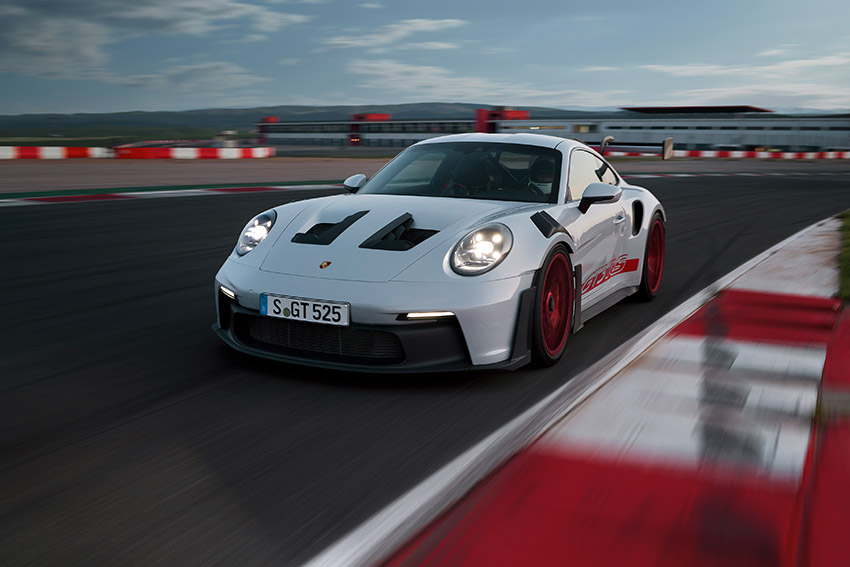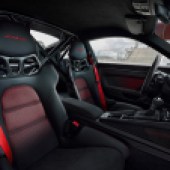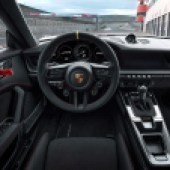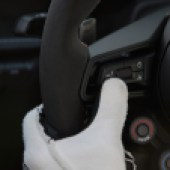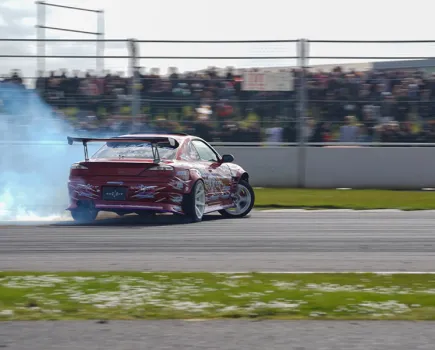The new Porsche 911 GT3 RS has been unveiled to the world, boasting plenty of design ideas taken directly from the world of motorsport.
The first thing to catch your eye is, naturally, the way it looks, but before we get into that, let’s talk about this car’s true headline feature.
For the first time ever on a roadgoing Porsche 911, the 992 GT3 RS will make use of a single centrally positioned radiator, rather than the three-unit layout used in all other recent model variations.
The concept’s DNA can be traced back to the Le Mans class-winning 911 RSR racecar and was further refined in the 911 GT3 R, which triumphed in the prestigious 24 Hours of Spa.
This reworked packaging has given Porsche’s engineers more room to play with on either side of the car’s front end, which they then promptly filled with trick active aero. This works in tandem with the rest of the car’s aerodynamic package to create a whopping 409kg of downforce at 124mph – three times as much as the ‘standard’ 911 GT3.
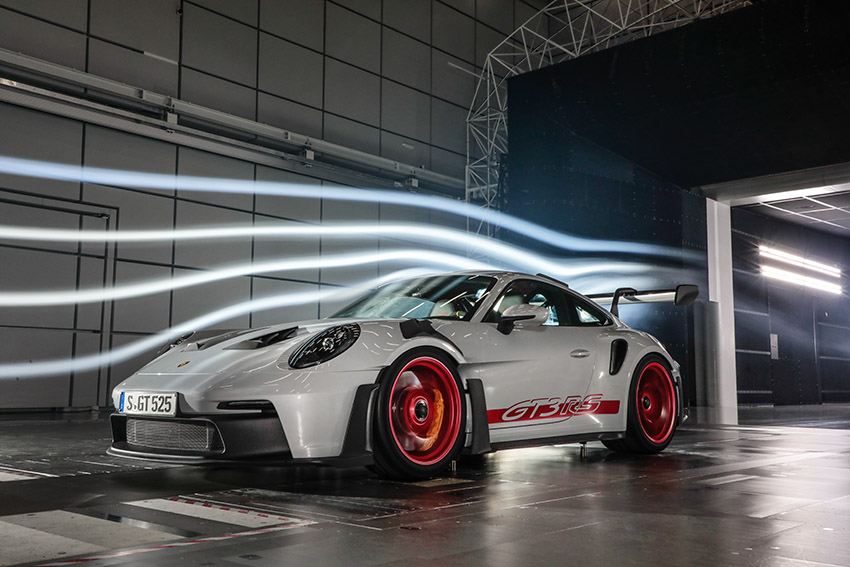
It is this quest for performance which has shaped the car’s eye-catching styling. Every vent, every wing: it’s all functional, and designed purely for the purpose of going around a road course faster than any other 911, or daring 911 rival. It’s a prime example of function leading form, and you certainly won’t catch us complaining about that when the results are as striking as this.
If the innovative radiator packaging wasn’t ‘racecar’ enough for you though, the addition of DRS should certainly suffice. Yes, a drag reduction system similar to the ones used by Hamilton, Verstappen and Leclerc has found its way onto the 911 GT3 RS. However, instead of only being able to use it when you’re within a second of the unassuming commuter in front, you’ll have free rein to deploy the rear wing’s active aero whenever you like. While this increases top speed, it does also reduce downforce, so use it wisely…
If you do end up use it unwisely though, the wing will do its best to get you out of trouble. In the case of an emergency stop, for instance, it will position itself at the maximum possible angle. This creates an air brake, which helps with deceleration.
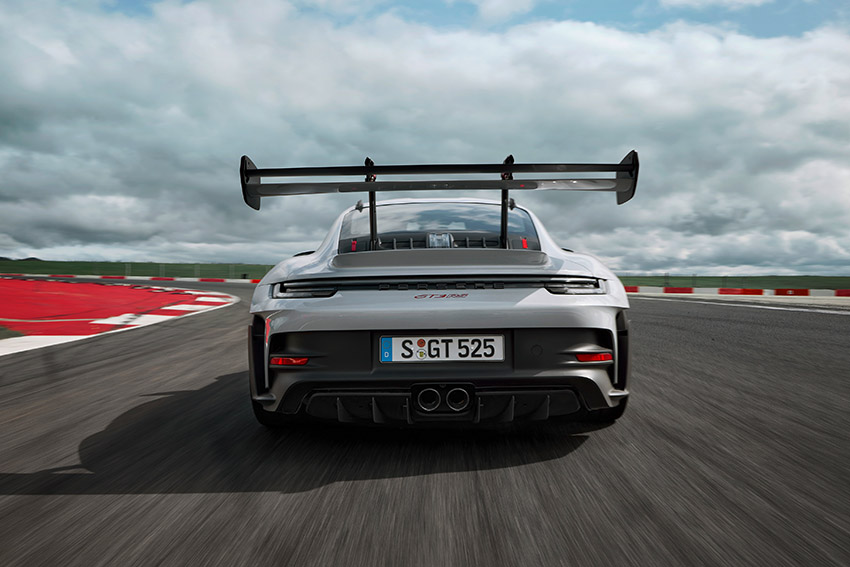
In truth, to feel the greatest effects of all of these features, you’ll have to be doing speeds which simply aren’t safe on public roads, and that speaks to what this car was truly built for. Although it’s a road car by name, the 911 GT3 RS is far more at home on a track.
As such, Porsche has dialled in the sort of all-round adjustability that avid track day attendees would want. The suspension damping, for example, can be altered from within the cabin thanks to ‘Track Mode’, while a rotary control located on the steering wheel allows changes to be made to the diff. If you really want to channel your inner Kevin Estre while out on the circuit, a push of a button will then reduce the car’s digital display to the bare minimum, shutting out any unnecessary distractions.
What’s more, the most dedicated apex hunters can opt for the Clubsport package at no extra cost (are you feeling alright, Porsche?), which adds a rollover bar, six-point harness, and fire extinguisher.

The attention to detail doesn’t end there. The more you delve into the specs of this car, the more it feels like an actual racer. The double-wishbone suspension for instance, hasn’t just been crafted with handling in mind, it’s also been designed to be as aerodynamic as possible to aid with airflow underneath the chassis. Plus, pitching under braking has been reduced thanks to the slight repositioning of trailing arm ball joints. These are the fractional lengths that Porsche has gone to.
Anyway, that’s all the impressive underpinnings covered, now what about the engine and gearbox? Well, the 4.0-litre flat six has been turned up a notch compared to the version found in the 911 GT3. In the RS, the power unit’s good for 518bhp thanks to a revised camshaft. Porsche’s seven-speed PDK gearbox has also been equipped with a shorter final drive to improve acceleration over the 911 GT3. In a car that weighs 1450kg, this results in a 0-62mph time of just 3.2 seconds and a top speed of 184mph.
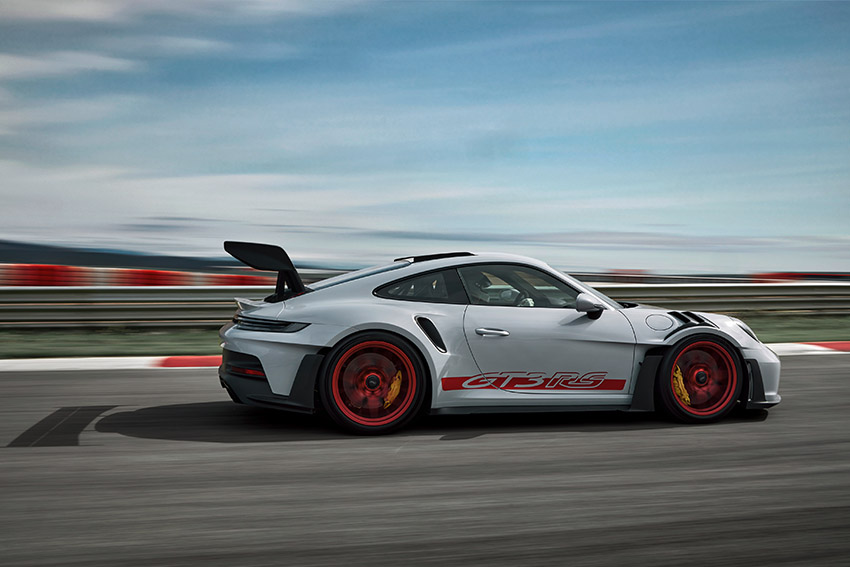
Further enhancements to Porsche’s ultimate track car can be had if you opt for the Weissach pack – a £25,739 options catalogue – which adds a large dose of carbon to the exterior and internal components, reducing weight and improving handling even further. You also get a motorsport-derived paddle shift featuring magnet technology, intended to provide slicker gear changes.
However, before you go ticking all the option boxes, do bear in mind that the base Porsche 911 GT3 RS is priced at £178,500 – a grand total of £88,700 more expensive than the common or garden 911 Carrera. Is it truly worth it? Well, perhaps not if you want a sports car that you can use regularly. If, however, you’re after the epitome of current track car technology, then you might just be able to justify it.

